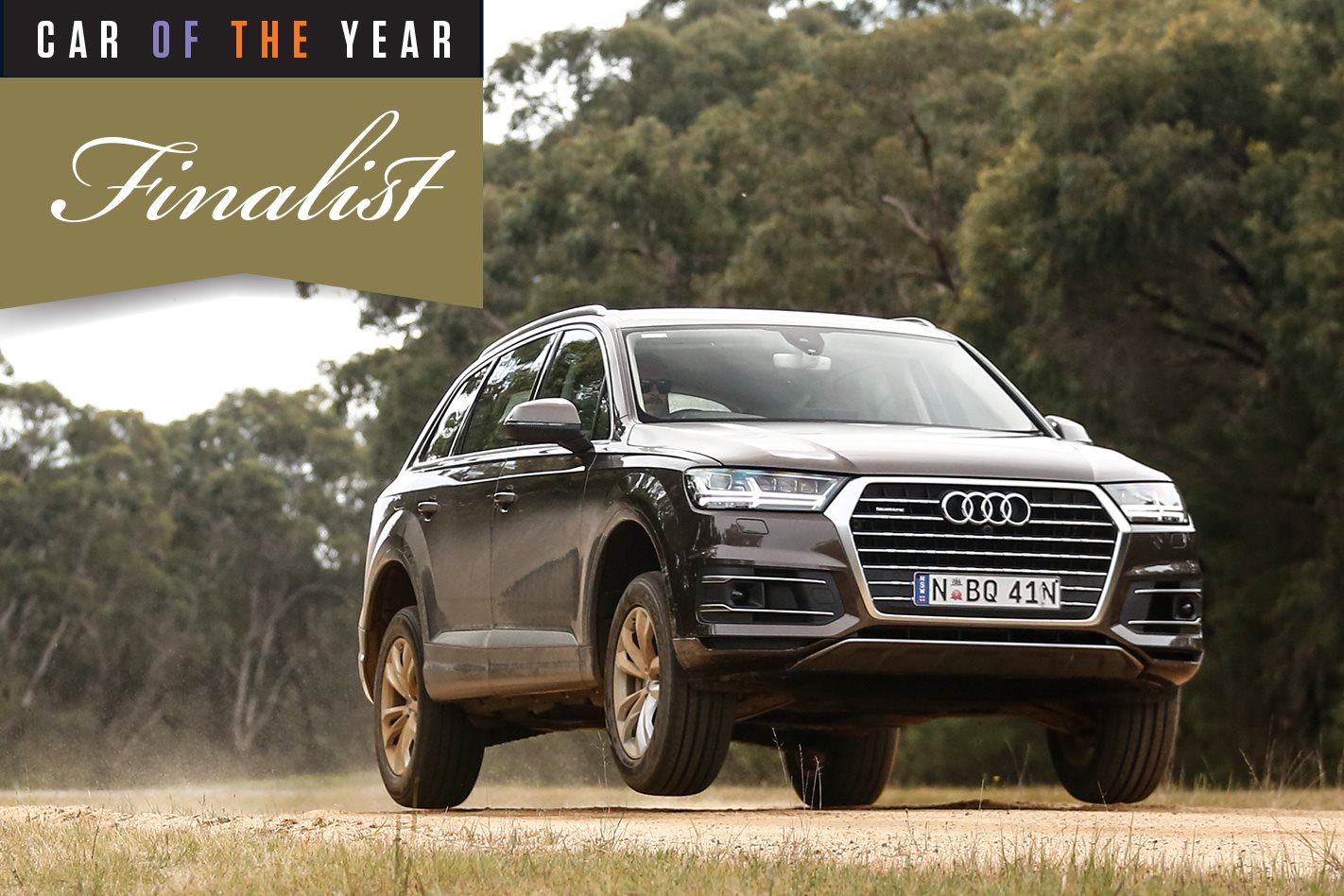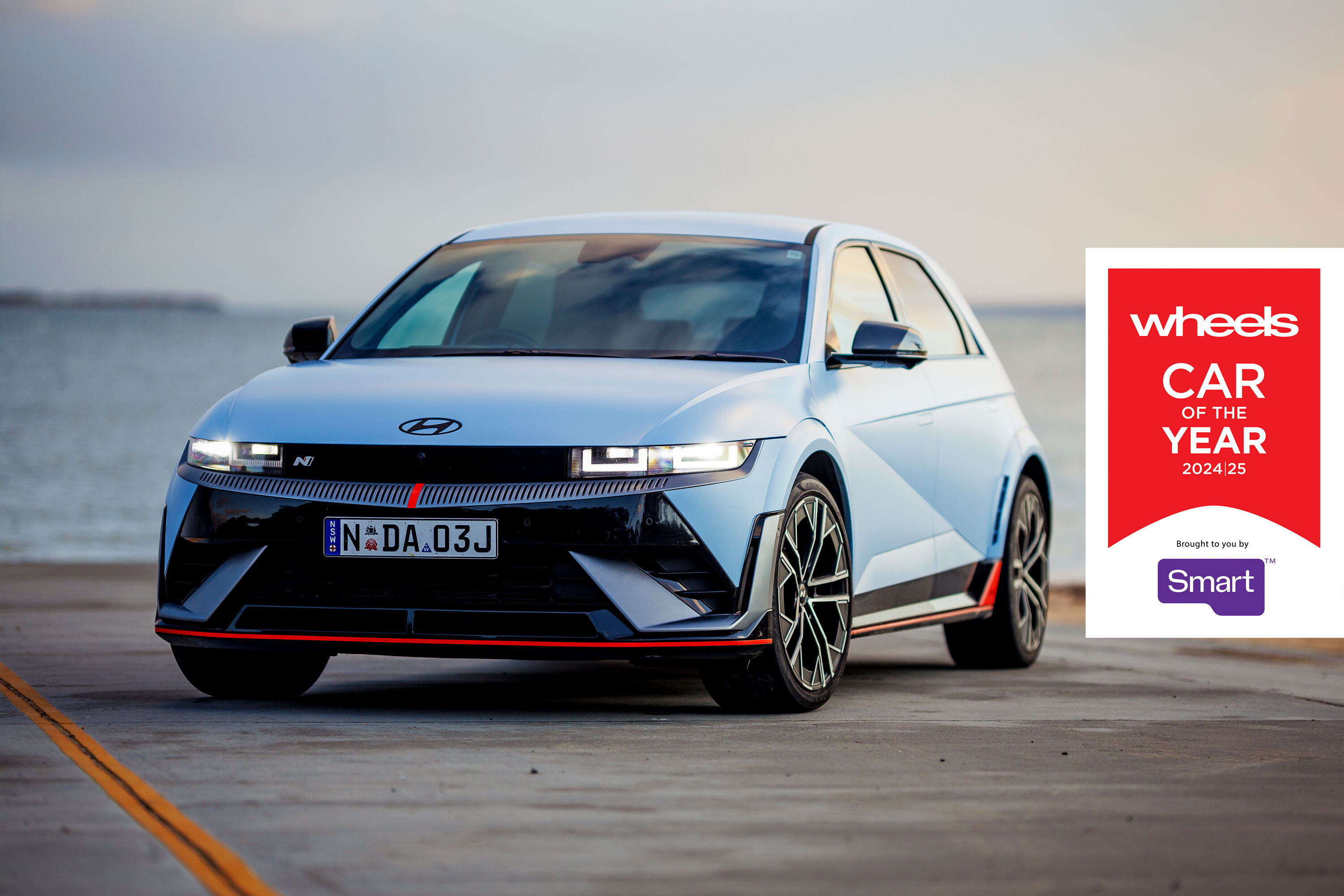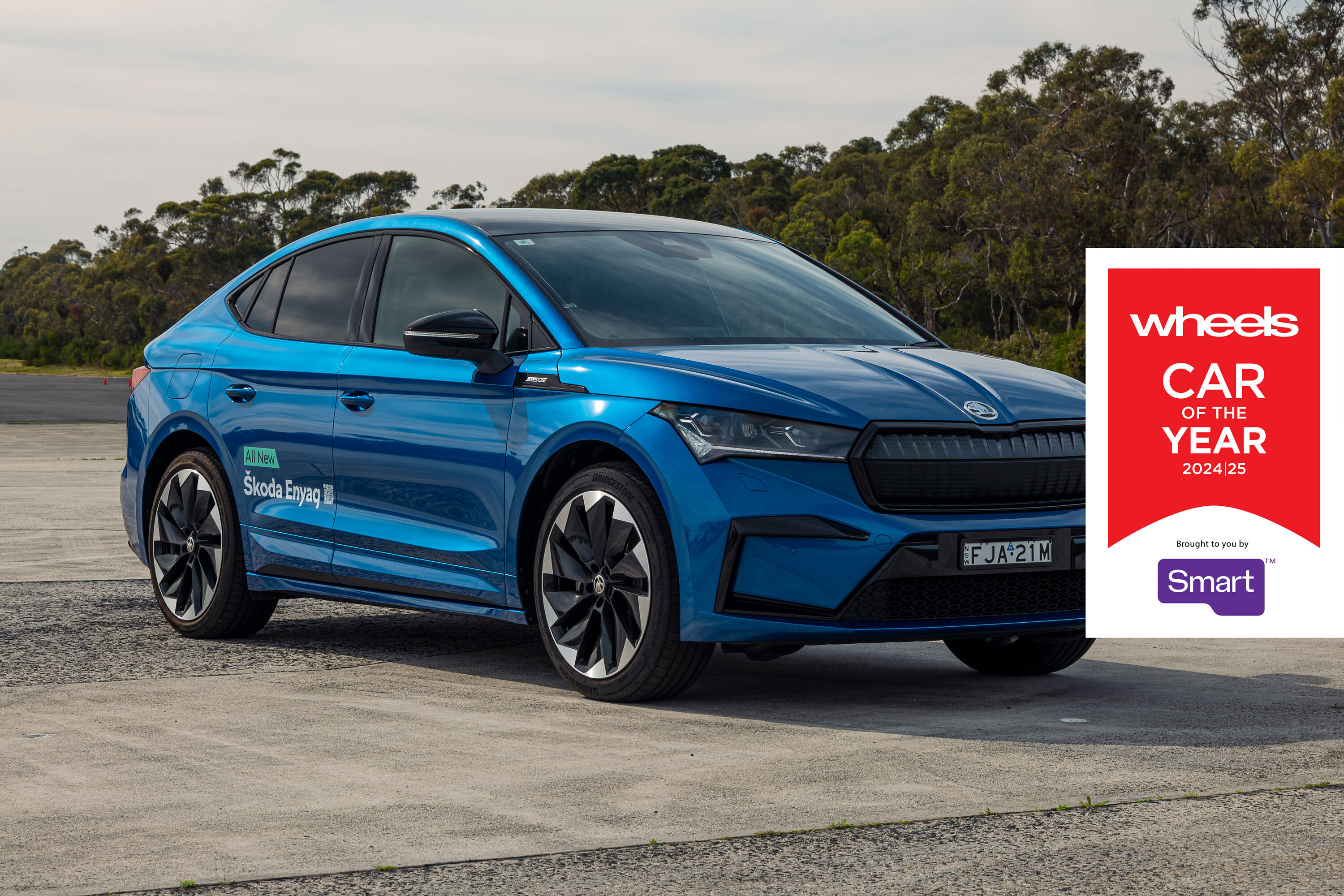No seven-seat SUV has ever pampered its passengers and delighted its driver as much as the new Audi Q7.
Rarely does an SUV come along that makes such a mark on Car of the Year. The last was the Ford Territory in 2004 – and it won.
The second-generation Audi Q7 – unfashionably late, but a vast leap over the original – resets the dynamic standards to which other luxury SUVs will now be measured.

The Q7 is cold, aluminium-infused proof a luxury SUV can (almost) drive like a passenger car while delivering on the interior flexibility and accoutrements expected of the family-friendly breed.

Credit goes to the full aluminium body (saving 95kg) and lighter components. For example, the single V6 turbo-diesel engine on offer for now (an e-tron hybrid is coming) weighs 20kg less.
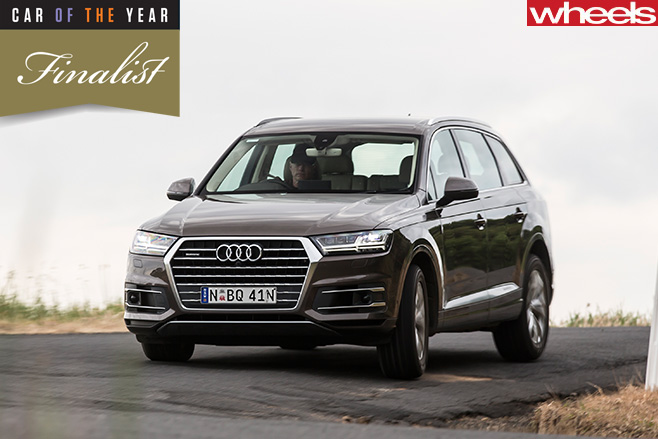
The Q7 has genuine style and thoughtfulness in its cabin. Combining the customisable 12.3-inch Virtual Cockpit with the retractable 8.3-inch colour screen makes for easy infotainment navigation. When paired with elegant materials and a clean, functional layout it reasserts the luxury oozing from every pore. It is a lovely place to be.
The further aft the COTY judges ventured the more they appreciated the flexibility of those seats, too. The second row flips, slides and folds in a 40/20/40 configuration, while the pair of individual third row pews glide elegantly into the floor at the push of a button. Topping it off are the child-seat anchor points in the third row.
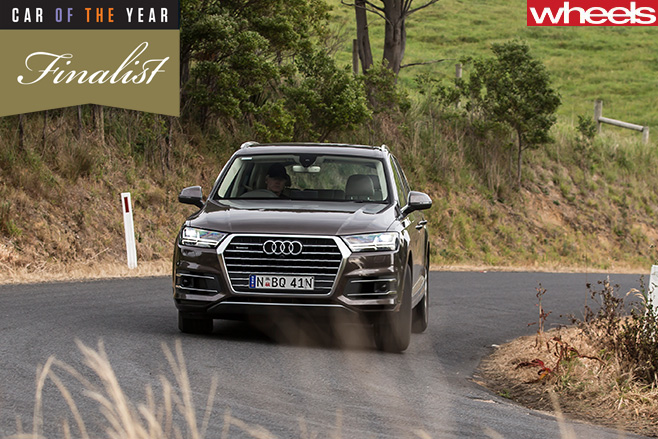
Indeed, the Q7 injects limousine luxury with sedan-like dynamics and levels of comfort until now not experienced in an SUV. There wasn’t a COTY judge that exited the big Audi without praising its class-leading refinement.
That refinement – in judges’ eyes deemed impressive at a price tag double the Q7’s $103,900 ask – helped comfortably advance the Audi through the 2016 COTY testing ranks.
Yet the long-awaited newcomer impressed from the second it hit the sodden Lang Lang proving ground on our first day of testing. That a car with the size and space of the Q7 can tackle corners with such surety and fluidity is testament to the engineering efforts beneath.
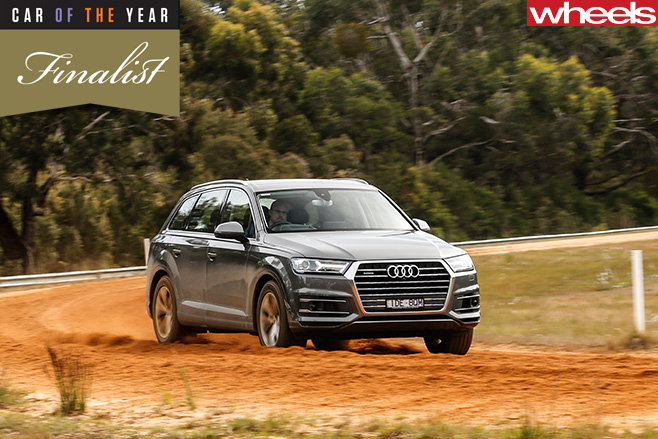
Fuel use wasn’t as impressive. While the 5.9 litres per 100km sticker is startling, the reality is less so. The Q7 used close to double that to complete the long COTY country loop, driven with spirited bursts, but with a lot less of the everyday stop-start that typically inflates fuel figures.
While the Q7 3.0 TDI is currently the only model available in Australia, we enlisted two examples for testing; one with standard steel coil springs, and one with the optional air suspension system.
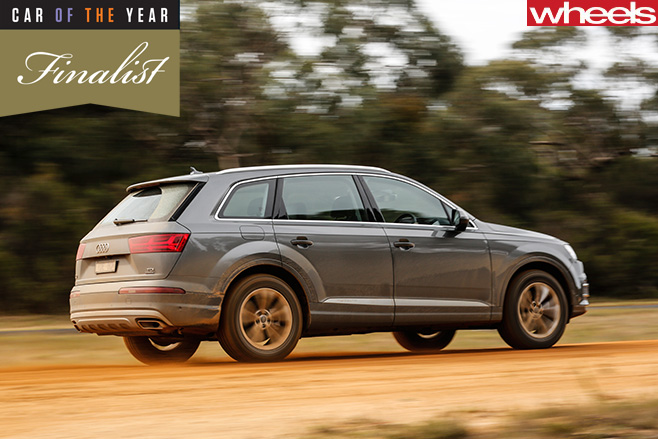
A rare dynamic hiccup was its dirt braking performance, while after some good ol’ COTY punishment, its brakes could become stinky and smoky following heavy applications.
Safety has also taken some significant steps with the Q7. For example, the auto emergency braking has been calibrated to recognise oncoming traffic and apply the brakes if the driver plans to turn across oncoming cars.
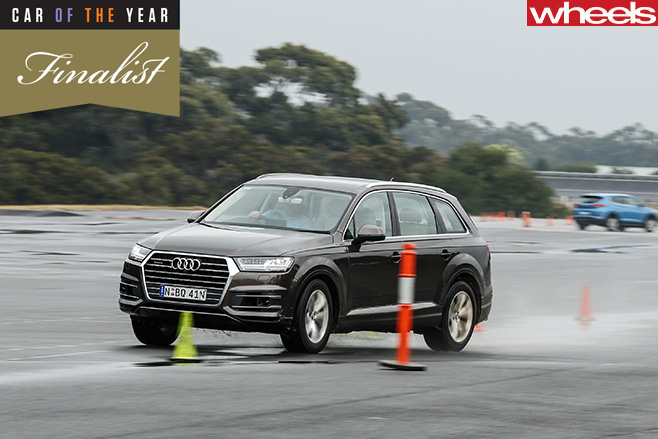
The Q7 and this latest diesel engine – loosely related to the former V6 – have so far escaped the controversy. But the company’s tarnished reputation leaves a sour “what-next?” taste, and every judge took that into consideration.
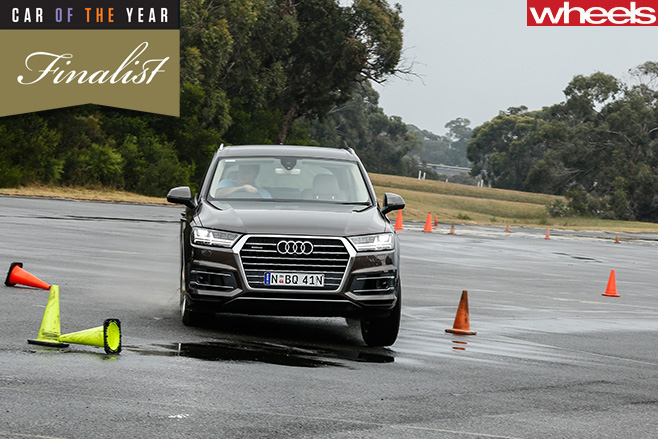
Still, there’s little overlooked in Audi’s most convincing and complete car to date.

